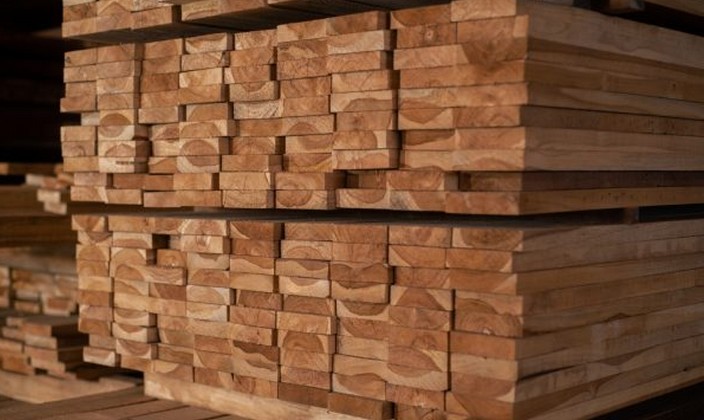From the Araucaria to the Canelillo: The 7 Flora Species Declared Natural Monuments in Chile
Chile stands out for its unique and highly biodiverse territory. Its geography, stretching between the desert and Patagonia, has given rise to endemic plant species with remarkable stories. To safeguard them, some have been declared Natural Monuments, a special category established in 1967 that provides unconditional protection to every individual of these species due to their exceptional biological, cultural, or scientific value.
This legal status not only restricts their logging or alteration but also promotes their study, restoration, and conservation across their entire natural range. Currently, only seven plant species hold this status in Chile. Learning about them is the first step toward appreciating their existence and contributing to their protection.
Araucaria or pehuén (Araucaria araucana)
Found in the high-altitude areas of the Andes between southern Biobío and La Araucanía, this species can reach over 40 meters in height and live well beyond a millennium, making it one of the longest-lived species in the country and a true emblem of the mountainous ecosystems in southern Chile.
Araucaria National Park
One of the oldest specimens is located near Laguna Captrén in Conguillío National Park and is estimated to be around 1,021 years old.
Currently, the species is classified as "vulnerable" by the IUCN (International Union for Conservation of Nature) due to multiple threats, including wildfires, climate change, and the expansion of exotic species like pine and eucalyptus.
In 1976, the araucaria became the first Chilean tree to be declared a Natural Monument, a key measure that restricted its logging and promoted conservation programs for its populations.
Its slow growth also makes it an invaluable resource for dendrochronology, the science that studies tree rings to reconstruct the climatic history of the region.
Alerce or lahuán (Fitzroya cupressoides)
It inhabits the temperate rainforests of southern Chile, particularly between the Los Lagos and Aysén regions. It is one of the longest-lived tree species in the world. A notable example is the so-called "Great Grandfather," a millennial tree growing in Alerce Costero National Park in the Los Ríos Region.
Andean alerce
The alerce continues to be the subject of valuable dendrochronological research that helps reconstruct the environmental history of southern Chile.
For years, it was estimated to be around 3,500 years old, but a 2022 study published in Science suggested its age exceeds 5,400 years, making it the oldest tree on the planet. Its discovery has been crucial for studying environmental and climatic changes over the past millennia.
Alerce wood, prized for its resistance and durability, was heavily exploited from colonial times until the 20th century, pushing it to the brink of extinction. In 1997, it was declared a Natural Monument, halting its logging and allowing for a moderate recovery of its populations.
Queule or keule (Gomortega keule)
Endemic to the coastal area between Maule and Biobío, the queule is an evolutionary relic: the last of its botanical lineage. Its yellow fruits were once dispersed by prehistoric megafauna and now only grow in fragments of humid coastal forests.
Keule
Its fruits were likely once dispersed by large extinct mammals like gomphotheres. Photo: M. Gardner, RBG Edinburgh.
Declared a Natural Monument in 1995, its "endangered" status reflects habitat loss due to wildfires, agriculture, and exotic plantations. Nursery propagation initiatives are key to preventing its disappearance.
Ruil (Nothofagus alessandrii)
A refuge from the past, the ruil is found in forests of the coastal drylands of Maule, spanning just a few dozen hectares. Its deciduous foliage evokes ancient Patagonian forests, and some specimens are over 200 years old. It is considered the most primitive Nothofagus in the southern hemisphere.
In critical conservation status, its populations have been reduced by wildfires, pine plantations, and agricultural expansion. Legal protection (1995) has spurred restoration and genetic conservation projects.
Ecological restoration of riverbanks and other critical areas aims to promote natural regeneration and prevent its definitive disappearance.
Belloto del norte (Beilschmiedia miersii)
Native to sclerophyllous forests between Valparaíso and O’Higgins, this tree thrives in poor soils and semi-arid conditions. Today, only about 18,000 individuals remain, scattered in ravines and coastal slopes.
Declared vulnerable by the IUCN and protected since 1998, its conservation has begun to stabilize thanks to reforestation with local seeds and restrictions on mining and logging in its habitat.
Belloto del sur
Though few, its specimens survive in areas with moist soil and dense shade. It was declared a Natural Monument in 1995 and is now "critically endangered." Initiatives to recover and plant new individuals in ecological corridors are underway as a key measure against habitat loss.
Canelillo or pitao (Pitavia punctata)
This evergreen tree inhabits ravines and waterways in a highly restricted area between the Maule and La Araucanía regions. For decades, it has been severely affected by logging, habitat fragmentation, and land-use changes.
Canelillo
Fewer than 1,000 mature individuals remain in their original habitat. Photo: César Sepulveda.
Today, it is one of the most threatened tree species in Chile and is classified as "Endangered." Its effective area of occupancy is estimated to be less than 10 km².
Due to this severe decline, it was declared a Natural Monument in 1995. Since then, conservation efforts have focused on ecological restoration of riverbanks and other critical areas to promote natural regeneration and prevent its definitive disappearance.
Source:Meteored

















